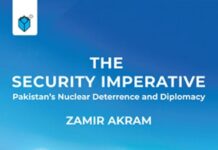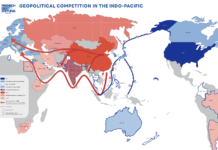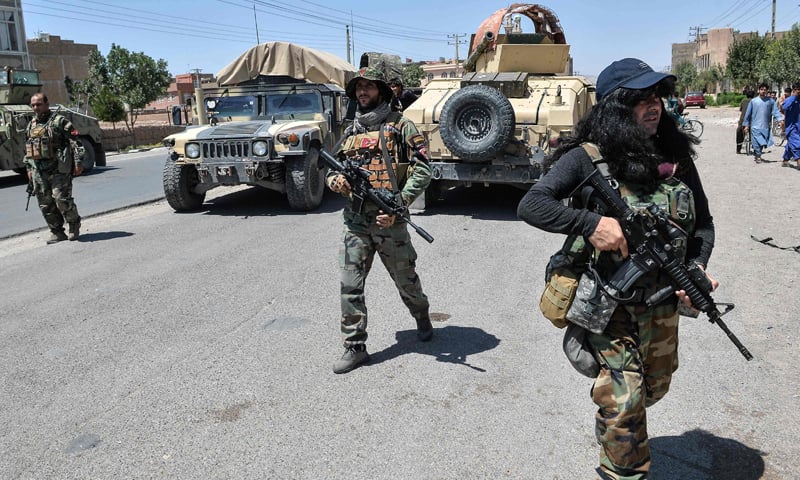Rabia Akhtar
Exploring Competing Regional Interests
Before we explore potential openings in the competing interests of South and Central Asian neighbors that Afghanistan has, we need to know whether Afghanistan itself has competing interests within. I do not believe that Afghanistan’s neighbors can support a singular framework for peace in Afghanistan for two simple pessimistic reasons emanating from some ground realities today:
- First, is there a vision of a ‘singular framework for peace’ in Afghanistan today which comes from within and is not imposed or asked to be adopted externally? Sadly, no. The Afghan government and the political elite in Afghanistan are at odds with the Taliban and their political and Islamic ideology. They accept the Taliban to be a part of the reality, they probably will also be alright with the power sharing formula, but they will never be OK with Taliban’s version of trade, energy, infrastructure, economic development, foreign policy, and regional connectivity, to name a few. So it is one thing to sign an agreement of peace with the Taliban and another one with the Afghan government, but the next logical step cannot be taken because of the ideological divide between the two factions who are being asked to share power.
- Second, the South Asian states, China, U.S. and Central Asian Republics can all agree on a singular framework for peace in Afghanistan, but it would not matter unless and until the ground realities change in Afghanistan enough to assimilate change where competing ideologies give way to place the survival and sovereignty of Afghanistan above all.
Is there a Road to Regional Connectivity that goes through Afghanistan?
Simply put, there is a need to explore confidence-building measures (CBMs) at two levels:
- First, between the Taliban and the Afghan government, where they both sit and introduce to each other their definitions of stability in Afghanistan, find areas of political convergences and talk about measures to diffuse divergences. That’s one level.
- The second level of CBMs is between Pakistan and the Afghan government. If the Afghan government will continue to blame Pakistan for patronizing the Taliban or influencing their decisions on ceasefire, or formation of a political government, the distrust that currently exists will only further deepen. The miscommunication, the distrust, needs to be addressed and sadly no one is thinking about these CBMs. Pakistan’s relationship with the Afghan government is a critical element of stability in Afghanistan for more than one reason, and this relationship is on rocky grounds. The sooner both sides understand the ugly reality, the better it will be for the peace process to have a chance once the U.S. withdraws from Afghanistan come September.
Pakistan believes that the five terrorist organizations who pledged allegiance to TTP last year, namely the Shehryar Mehsud group, Jamaatul Ahrar, Hizbul Ahrar, the Amjad Farooqi group, and the Usman Saifullah group (formerly known as Lashkar-e-Jhangvi) who are using Afghanistan as safe haven to launch terrorist attacks inside Pakistan, are allowed to operate with impunity by the Afghan government, who wants to inflict damage on Pakistan for its ‘alleged’ support of Taliban. Perhaps there is this sentiment that this pressure generated by TTP et al, will push Pakistan to pressurize Taliban in returning to a ceasefire. It seems as if there is an uncomfortable, unspoken, quid pro quo at work here. This is a circular argument and there aren’t any winners here. This elephant in the room must be addressed, and until and unless that is done, spoilers who want to derail the Afghan peace process will continue to exploit the space to do so. The U.S., therefore, before the September deadline, is in such a position where it can bring both parties together and ask them to sort their issues out and create an atmosphere of trust to work together towards realizing the goals of the peace process initiated last year.
In the absence of such CBMs, which address the core of the distrust, stability will remain an elusive dream, irrespective of how many peace deals are signed or trashed. The credibility problem, the image problem, endless assumptions regarding Pakistan’s wants and desires with respect to the future government in Afghanistan needs to be dealt with. There needs to be CBMs on counter terrorism between the Afghan government and Pakistan instituted by the U.S. if the two parties do not willingly go for them.
Taliban Need to Share their Vision with the World: No Free Passes
While the U.S. and other regional countries have put their cards on the table with respect to their vision for Afghanistan, the Taliban need to be pushed to spell out their ‘vision’ of Afghanistan. No one knows what that vision is. The core ideological issues discussed above, are in direct clash with how Taliban see Afghanistan as the Islamic Emirate of Afghanistan, with an Emir ul Momeneen at the top. The Afghan government, on the other hand, with whom the Taliban have to share power to form a future government, wants to rebuild Afghanistan in the image of the Republic post U.S. withdrawal. Unless the Taliban are pushed to share their vision of democracy in the Islamic Emirate, their treatment of minorities and women’s rights in the Islamic Emirate, their foreign policy, their vision of Afghanistan’s economic growth, their vision of regional connectivity and integration with its South and Central Asian neighbors, they will not develop a framework which meets the standards of other democratic Islamic and non-Islamic states in the neighborhood.
The Taliban must be pushed to think and formulate their vision for the world to see the change they claim they have undergone since 2001. At present, that change is not visible and it seems like a one-way street, with the Taliban setting the terms of the engagement.
Is there a Shared Understanding among all Stakeholders?
Shared understanding cannot be talked about unless all stakeholders bring their visions to the table to see where they converge and diverge. That’s the first step. Only then can both the Taliban and the Afghan government, and other political stakeholders be made to believe in a compromise that each must make to form a government in Afghanistan.
What is the reality today? Afghan people, 34 million strong, do not want Taliban to represent them at any forum in the world. Shouldn’t the Taliban be asked this: what is their strategy to win the hearts and minds of the Afghani people if they want to form a government to rule over these 34 million? If the levers to coerce the Taliban to share their vision of how they will form a government post-U.S. withdrawal currently do not exist, then they need to be created.
Regional Threat Perceptions about the Afghan Peace Process post-U.S. withdrawal
It was a big win for the Taliban when they got away with setting the tone of ‘talking over bullets’, not doing ceasefire, and the world being OK with it, allowing them to continue killing innocent civilians in Afghanistan and having their way.
The biggest threat to the Afghan peace process comes from within. The stakeholders who have to form a government and share power, are at extreme ideological divides and do not consider each other the legitimate political entity capable of forming the government. The ownership of the Afghan peace process needs to come from within. And that ‘within’ is not one unit. The Taliban have got nothing to lose and they know that the world and the U.S. have let them be; they can continue fighting a war even if U.S. forces leave, because no punitive costs have been imposed on them. They ask for prisoners to be released, for terrorists to be released, for narcotics kingpins to be released, and the other side is appeasing them at every step. We do not even know what exactly is at stake for the Taliban? Do we know as to what are the tangibles that, if taken away from the Taliban, will make them do a cost-benefit analysis of their actions? Why was the U.S. OK with Taliban’s word that they will break away from Al-Qaeda and make sure Al-Qaeda doesn’t attack the U.S. in future? Was that a sufficient precondition for U.S. withdrawal? Reports suggest they are still in cahoots. So what gives after 20 years? The U.S. has much to be accountable for and scapegoating Pakistan isn’t going to cut it.
So, NO, Biden’s Afghan pullout is NOT a victory for Pakistan. Pakistan must demand such accountability from the Biden administration before the U.S. takes the region 40 years back in time. No free passes, please.
Dr.Rabia Akhtar is Editor, Pakistan Politico. She tweets: @Rabs_AA.

















